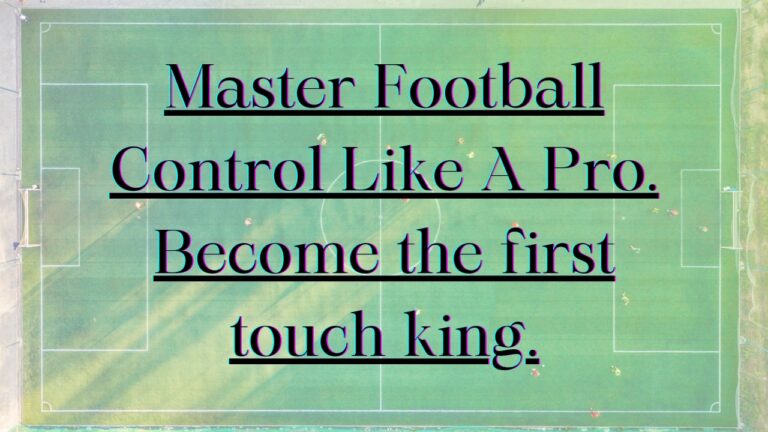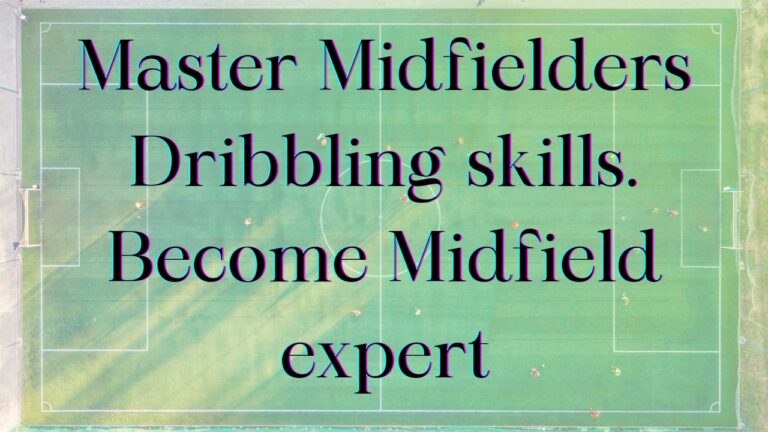Dribbling is one of the most important fundamental skills in soccer. It involves using your feet to maneuver the ball while running down the field. Mastering dribbling takes practice, but being able to cleanly beat defenders on the dribble can pay huge dividends for advancing the ball and setting up scoring chances. This article will teach you proper dribbling techniques and provide drills to help improve your ball control.
Getting Started with Dribbling
When first learning to dribble a soccer ball, there are some key things you need to begin practicing:
Get the right equipment.
Having the proper shoes and the right type of ball to practice with will make learning to dribble much easier.
Choose outdoor or indoor soccer cleats with molded studs or patterns on the sole to prevent slipping. And pick a ball that matches your size and skill level.
Find a suitable surface.
Practice dribbling on a flat outdoor field or blacktop basketball court when starting. Avoid bumpy terrain until you develop more ball control. An indoor gym floor or futsal court also works well.
Drill the basics before adding defenders:
At first, focus on controlling the ball with both feet while running straight ahead at different paces. After making progress, add in lateral cuts, stops, and changes in direction before adding defending players.
Regularly practicing on your own is key to developing the fundamentals and building confidence on the ball. Don’t be afraid to start slow while learning proper techniques.
“Body Positioning and Dribbling Technique”:
Body Positioning and Dribbling Technique
When running with the ball at your feet, body position and balance impact control and efficiency of movement. There are four key elements to focus on:
Stance
Having the proper stance is vital for balance and movement. Make sure to:
– Keep your knees slightly bent
– Lean your body slightly forward at the waist
– Stay on the balls of your feet/toes instead of running flat-footed
Bending your knees and leaning forward puts you in an athletic position for quicker changes in direction. Being on your toes keeps you light on your feet and mobile.
Eyes Up
It’s common for beginners to stare at the ball by their feet as they learn to dribble. But it’s important to resist this urge and instead:
– Keep your head up facing the field.
– Use your peripheral vision to track and feel where the ball is at all times
Keeping your eyes up allows you to see the field and defenders around you rather than losing situational awareness. This takes practice but is key for effective dribbling.
Arms Out
Your arm positioning aids significantly in balance and momentum shifts:
– Arms out to sides, elbows bent
– Can adjust arm swing to help change direction
– Avoid crossing arms or hands straight down
Having arms out creates a counterbalance for planting your feet and the motion of moving the ball side to side. Adjust arm angles as needed when turning and accelerating.
Light Foot Touches
The most fundamental dribbling skill is mastering gentle yet controlled touches on the ball:
– Roll the ball gently instead of pushing it forcefully
– Make frequent, small touches using the insides and outsides of both feet
– Vary pace and parts of feet contacting the ball—inside,/outside/laces
The key is manipulating the ball delicately. Making heavy touches leads to surrendering control.
Begin slowly, focusing purely on technique, before attempting any speed. Master the light, deft touches that display complete command over the ball at your feet.
The rest of the technical points on types of dribbles, moves, and beating defenders remain the same. Let me know if you need any other sections expanded further!
Beating Defenders While Dribbling
Beating Defenders While Dribbling
When encountering defenders, there are several techniques you can use to try and beat them while retaining possession:
Body Shielding
Shielding the ball with your body is one of the most common and effective ways to hold off defenders:
– Keep the body positioned between the defender and the ball
– Use arms, shoulders, hips, and legs to feel defender and box out
– Shift as the defender moves to maintain a protective barrier
Don’t be afraid to make body contact and hold your ground as the defender jockeys and pokes at the ball. Securing possession against pressure is a valuable skill.
Bursts of Acceleration
If you spy open space, exploding forward can help you blow past a defender.
– Coax the defender toward you before accelerating
– Take 3-4 longer, quicker touches to burst downfield
The defender’s momentum will make it hard for them to catch up
The key is the rapid shift from slower dribbling to top-speed acceleration after you bait the defender in. This change of pace and explosion into space create separation.
Cuts and Fakes
Executing convincing cuts, fakes, and sudden changes in direction can also help lose defenders:
– Head fake one way before cutting the ball hard the other way
– Stop the ball dead before exploding in the other direction
– Use inside/outside cuts to wrong foot defender
Mastering hard cuts, fakes, and stops allows you to beat defenders through footwork and deception rather than pure speed. Defenders will constantly be a step behind your next move.
Getting comfortable maneuvering the ball in tight spaces with defenders swarming takes work. But mixing in techniques like shielding, acceleration bursts, and sharp cuts will steadily improve your ability to beat defenders 1v1.
Dribbling a soccer ball takes time and persistence to master. But going through proper technique drills and continuously challenging yourself in practice will lead to improved ball control and the ability to beat defenders. And becoming a competent dribbler gives you an invaluable asset to help create and finish scoring opportunities.
RELATED POST: How to Get Better at Soccer: 9 Tips from the Pros
REFERENCE:
Video: https://youtu.be/naEccnjzLxM?si=9sJCaDmAZPW7ddNW






